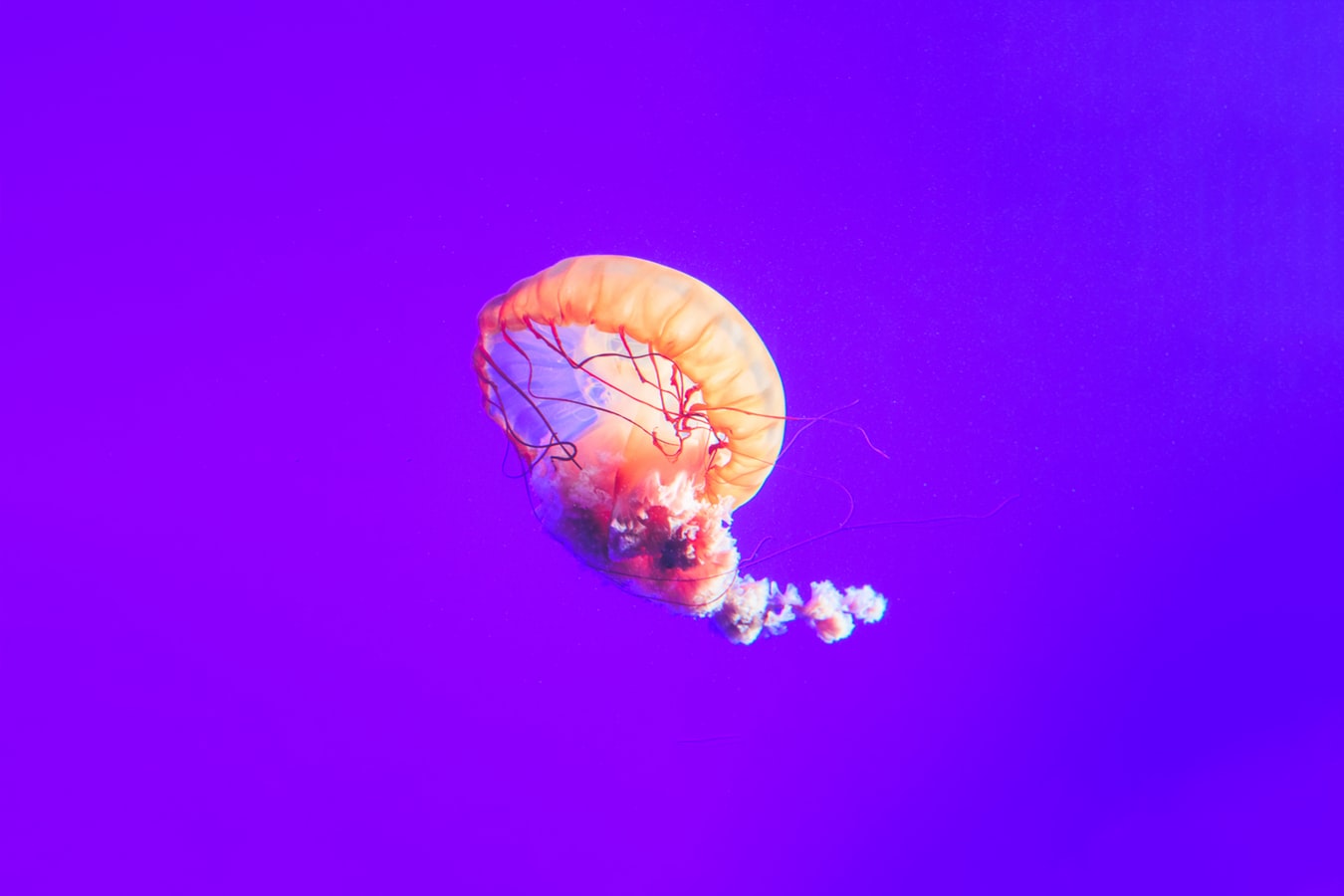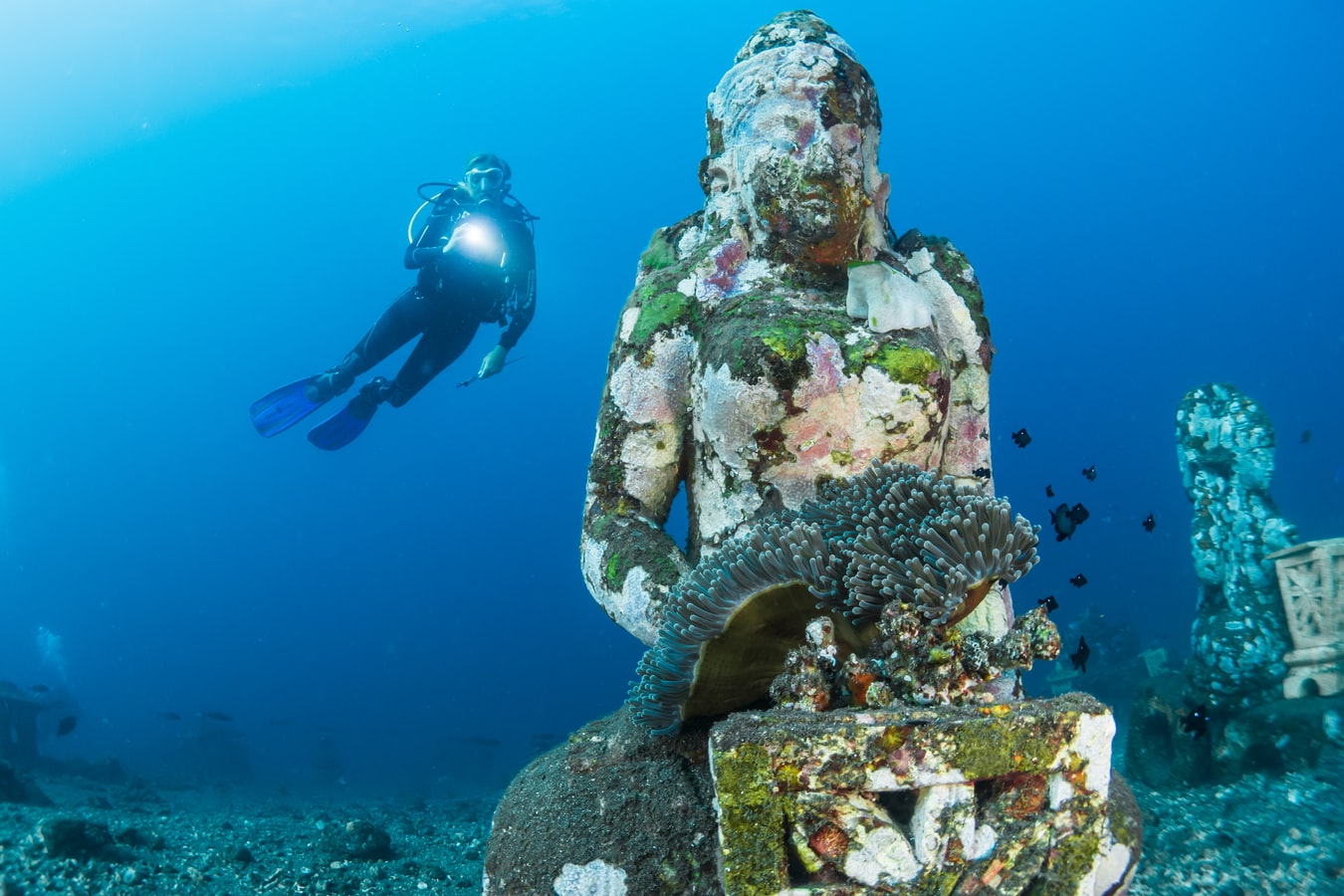The newest mirrorless cameras have a great balance between high-end image quality and physical practicality, which makes them ideal for underwater shoots. Since divers need to carry around a lot of dive equipment, the lightweight and compact size of mirrorless cameras can certainly make their endeavors much easier.
Nowadays, almost every manufacturer is producing underwater housings for mirrorless cameras – any accessory you can get for your DSLR, you can almost certainly get for your mirrorless at a fraction of the cost. These housings are really reliable nowadays, especially those which belong to high-end brands and are made of quality waterproof materials.
Before we focus on various housings for mirrorless cameras, we’ll cover all you need for a successful underwater shoot. In case you’re an absolute beginner, you should definitely start slowly and skip things like strobe kits (you can practice with natural light only, at least in the beginning!).

What do you need for an underwater shoot?
The five basic items:
- Mirrorless camera
- Lens – preferably macro or wide angle
- Underwater housing from a reputable seller
- Lens port – its function is to correct the refractive properties of water
- External strobe kit consisting of strobe, arm system, and cable – this is for more advanced underwater photographers
Additional five items for serious underwater shoots:
- Focus light and holder on helping you shoot more quickly
- Second strobe kit if you want more elaborate lighting
- Additional lenses – you can experiment with portrait ones as well
- Additional lens ports
- A case for safety – it’s watertight protection for photography gear

Finding The Perfect Underwater Housing
If you want to use a mirrorless camera for underwater photography, it’s really important to choose a camera that already has an existing underwater housing on the market. Many third-party manufacturers sell quality housing in case the camera producer doesn’t have any housing options. For instance, Panasonic and Olympus are the leaders in the mirrorless market, and they make their own underwater housings. In contrast, Canon and Nikon don’t make them, and housings for their cameras are produced by Ikelite, Nauticam, Inon, Aquatica, and similar brands.
What really matters is to choose underwater housing that is made of quality materials. Underwater housings can be made of different materials – some of them are safer than others. High-end housings are usually made of aluminum, while cheaper housings are made of plastic.
When buying housing, there are a few other things that you should look for in addition to quality materials. Additional important features on the housings are easy to access to the camera controls, good ergonomics, fiber optic connections, good viewfinder options, and also leakage alarms.
You should certainly avoid buying cheap underwater housings because they might start leaking at some point and ruin your camera. Cheap plastic housings are also too large, and it’s really hard to handle them.
Mirrorless Camera Underwater Housings
The following list includes some of the most reliable underwater brands and their housings:
- Olympus – Their most popular underwater housings are for E-PL1, E-Pl2, E-PL3, E-PL5, E-PL7, E-PM1, and E-M1 Mark II.
- 10-bar – They make housings for Olympus models E-PL1, GF-1, GF-2, and GH-1.
- Ikelite – They are well-known for their quality housings for many camera models, such as the popular Sony A7R III.
- Recsea -Their housings are made for Olympus cameras such as E-PL1, GF-1, GF2, GH-1, NEX-5, NEX-5N, NEX-7, GH-2, and OM-D E-M1.
- Nauticam – This company makes housings for various mirrorless cameras, such as the Olympus OM‑D E‑M1, the Panasonic GH5, and the full-frame Sony A7R III.
- Aquatica – They make aluminum housings for Olympus, Panasonic, and Sony mirrorless cameras.
- Sea & Sea – They also make quality aluminum housings, mainly for Sony models.
- Acquapazza – This company makes great quality housings for Sony models NEX-5 & NEX-5N.
10 Tips For Shooting With Underwater Housings
These are the basic underwater photography tips everyone should know – they will make your underwater shoots much easier and less chaotic.
1. Get Closer
No matter what kind of subject you plan to shoot during your underwater session, you should get close to it – within approximately 12 inches. Bear in mind that water reduces color and contrast, and that can make your images rather flat.
2. Use Flash
While flash is not necessary, it will make your underwater sessions somewhat easier. Make sure your camera flash is turned on! Also, make sure to understand how light behaves underwater. Learn about ambient light, artificial lighting, and how to use strobes or underwater flashes effectively to illuminate your subjects.

3. Position Your Flash Properly
In case you’re a more advanced user and you know how to use an external flash while shooting underwater, you shouldn’t forget to place your flash as far away from your housing as possible to reduce backscatter.
4. Stick To Low ISO
It’s crucial to stick to low ISO in underwater sessions and avoid noise as much as possible. In order to achieve this, you should set your camera to the highest resolution and the lowest ISO. Always shoot RAW during your underwater sessions.
5. Adjust White Balance
Setting a correct white balance can be somewhat confusing when shooting underwater. The best scenario would be to use auto white balance when using a flash and custom white balance when using only natural light.
6. Shoot In Aperture Priority Mode
It’s a good idea to use manual mode or aperture priority mode underwater because these modes will allow you to have more control over the natural light as well as the light from your flash. Also, master the concept of depth of field and how it affects your images. Experiment with different apertures to control the amount of sharpness and blur in your photos.
7. Experiment With Spot Focus Mode
It’s not easy to focus underwater – sometimes, it is the most challenging part of this kind of photo shoot. In order to focus quickly, try using spot metering.
8. Be Aware Of Shutter Speed
Your underwater photos might be somewhat blurry, especially if you’re new to this genre of photography. The shutter speed you use matters a lot – it should be around 1/30th for still objects, 1/60th for slow-moving objects, and 1/125th for faster-moving objects such as fish.
9. Carefully Choose Lenses
Your choice of lenses should depend on the type of photo you want to get. For instance, you can use a 100mm to isolate the subject, just like in portraiture or wide-angle lenses for landscape scenes.
10. Bring A Dive Light
In case you plan to do deep diving or dive after sunset, you should bring a dive light with you in addition to a flash.
11. Buoyancy Control
Maintain good buoyancy control while diving to avoid disturbing the environment and marine life. This will also help you position yourself effectively for photography.
12. Stability
Keep yourself steady while shooting underwater. Use both hands to hold the camera housing firmly and minimize movement.
13. Composition
Familiarize yourself with the principles of composition and how they apply to underwater photography. Aim for balanced and visually appealing compositions.
How to edit underwater photography
After the dive, transfer your images to your computer and use photo editing software to enhance them
Editing underwater photography involves a few key steps to enhance and bring out the best in your images. Here's a general guide on how to edit your underwater photos:
- Select and Sort:
- Review your images and select the ones you want to edit. Focus on the shots that have the most potential or appeal to you.
- Delete any irrelevant or poor-quality images to save disk space and streamline your editing process.
- Adjust White Balance:
- Underwater images often have a bluish or greenish cast due to the water's color. Adjust the white balance to correct the color temperature and restore natural tones.
- Use the white balance eyedropper tool in your editing software to sample a neutral or white area in the image and set it as the reference point.
- Enhance Exposure and Contrast:
- Adjust the exposure and contrast to improve the overall tonal range and dynamic range of your photo.
- Use the histogram as a guide to ensure your image retains detail in the shadows and highlights without clipping.
- Correct Colors and Saturation:
- Fine-tune the colors to make them more vibrant and accurate.
- Adjust the saturation or vibrance sliders to enhance the richness of the colors, but be careful not to oversaturate the image.
- Reduce Noise and Enhance Sharpness:
- Underwater photos can suffer from noise, especially at higher ISO settings. Use noise reduction tools or filters to reduce noise while preserving details.
- Apply sharpening techniques to enhance the overall clarity and crispness of your image. Use selective sharpening if needed, focusing on the main subject.
- Crop and Straighten:
- Consider cropping the image to improve the composition or remove distractions. Use the rule of thirds or other compositional guidelines to guide your cropping decisions.
- Straighten the horizon or any other tilted elements in the image if necessary.
- Remove Distractions:
- Use spot healing or cloning tools to remove any unwanted distractions like backscatter (floating particles) or stray objects.
- Be careful not to overdo it and maintain the natural look of the scene.
- Final Adjustments:
- Fine-tune other settings, such as saturation, vibrance, clarity, and vignetting to achieve the desired look and feel for your image.
- Experiment with different editing techniques, filters, or presets to create a unique style or mood.

Plan to start exploring and photographing underwater environments. You should be aware of the fact that mirrorless cameras might be the perfect choice because they allow users to devote more attention to creative results without having to deal with large and heavy camera bodies associated with DSLRs. You should definitely give mirrorless cameras a try – you might be surprised at their quality!
To learn more about underwater photography and underwater housings, check out the following links:
Further Resources:
Great article thanks Jasenka! I didn’t even know shooting underwater with a mirrorless camera was even a possibility! Do people shoot underwater with DSLRs as well?
Light Stalking https://ift.tt/cjLQ4P5
Sourced by Time Trap Photography sharing the best photography tips, news and tricks throughout the industry. Time Trap Photography is dedicated to freezing those special moments in life that can be revisited and admired for generations to come. - Shannon Bourque
Please visit our main site for booking availability and rates.

Receive valuable industry knowledge delivered free to your email each day.









Jasenka – Canon produces and sells underwater housing, safe up to 40 meter for Powershot G7II. It´s cheap compared to most housings and is excellent. Used it last year in the Caribbean. It was borrowed and used for scuba diving in Lofoten last autumn and worked very well there as well.